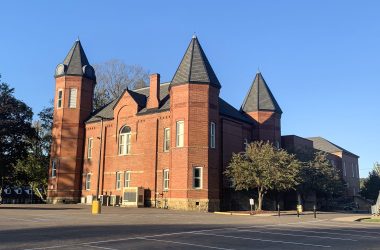John 2:1-12
Many of the happenings recorded in the gospel of John are not found in the other gospels. John would have known the content of the gospels of Matthew, Mark and Luke when he penned his gospel more than fifty years after the crucifixion. It would appear that John was moved by the Holy Spirit to expound upon happenings and teachings that the other gospel writers had not fully addressed.
Jesus’ first miracle (the turning of water into wine) is not recorded by any other writers. Unlike numerous other miracles, this one did not involve healing, bringing the dead to life, or a public manifestation of His divine power. It was witnessed most definitely by John, by Jesus’ other disciples, by a few servants, and possibly by Mary.
Superficially, the miracle would seem little more than a random exhibition of power which had as its sole purpose the sparing of embarrassment to the bridegroom. An examination of the text before us reveals a deeper purpose for John’s account of this miracle.
The marriage feast was the third day (v. 1). The third day from what? A review of chapter 1 reveals that Jesus began gathering His disciples on the first day. Two disciples (Andrew and an unnamed disciple) witnessed the enlistment of fellow disciples. The unnamed disciple is most likely John, the human author of this gospel.
We are told that Mary the mother of Jesus was there. It is evident from verse 5 that Mary was a close friend of the family of the bridegroom — close enough for the servants to recognize her as someone who might relay messages from the bridegroom. The acquaintance which Mary enjoyed with the bridegroom’s family was such that Jesus and all who accompanied Him were welcomed guests at the marriage feast. In verse 3, Mary informed Jesus that they had no wine. From Jesus’ response (v. 4) it is apparent that Mary was not just passing on information. She was asking Jesus to do something to remedy the situation.
Jesus answered: “Woman, what have I to do with thee? Mine hour is not yet come.” Jesus, in addressing His mother as “woman”, responded, not as Jesus the son of Mary, but as Jesus the Son of God. The “hour” to which Jesus refers is the time at which He would reveal Himself as God the Son, the One who possessed the power of the Creator.
Mary, seemingly, ignored Jesus’ words and directed the servants present to do whatever Jesus directed them to do. The action which Jesus would take (the turning of water into wine) would reveal to all present that He possessed the power of God, Almighty. Jesus was sent by God the Father on a mission to justify many by bearing upon the cross the iniquities of all who would believe (Isa. 53:11). The turning of water into wine, while seemingly not essential to Jesus’ mission, was very much a necessary part of it. Jesus came not to destroy the law but to fulfill its every jot and tittle (Matt. 5:18). The law required Jesus to honor His mother’s request. Jesus fulfilled the law that no man can keep.
The miracle which transpired is inexplicable. From man’s current understanding of science, it is an impossible happening. For water to become wine, molecules of water would need be transformed into carbohydrate molecules found in wine. This would involve the transmutation of elements. This is a process which can occur within the interior of stars — not in waterpots.
John, in chapter one, verse three, stated that all things were made by Him, and without Him was nothing made that was made. The miracle before us is evidence that Jesus is the Creator of all things. This evidence was revealed to John, to the other disciples, to the servants, and perhaps to Mary. It is possible that Mary returned to the feast after instructing the servants and did not witness the turning of water to wine. This miracle, while revealing Jesus to possess the power of the Creator to John and the disciples, did not reveal Jesus’ true identity to those partaking of the feast. It most certainly did not prevent Him from fulfilling the Father’s plan to make His Son an offering for all who would believe.
What the disciples and servants knew was hidden from those who drank the wine. The ruler of the feast drew the bridegroom aside and told him that he had saved the best wine for the last. The miracle did not reveal Jesus before the “hour” to do so had come. The beginning of that hour would be determined by the completion of John the Baptist’s mission to prepare the way.
Having witnessed the miracle, the disciples believed on Him (v. 11). The disciples were drawn to Jesus. From the beginning, they believed Him to be the Christ (chap. 1, v. 41). The disciples followed Jesus initially because they possessed a measure of faith — faith that He was the Messiah. After the wedding at Cana, they possessed a far greater measure of faith. Their faith after the crucifixion was far, far greater than at the beginning or after witnessing the turning of water to wine. Faith is built in increments. God gives a first revelation to them who will believe. To them who act upon that belief (as did the disciples), He gives additional revelations. God builds up the faith of all who will act upon that which they receive.
Let us be as the disciples. The miracle at Cana would grow their faith such that they would eventually be empowered to deliver the gospel to all people. Let us be built up in like manner such that we might produce good fruit.



